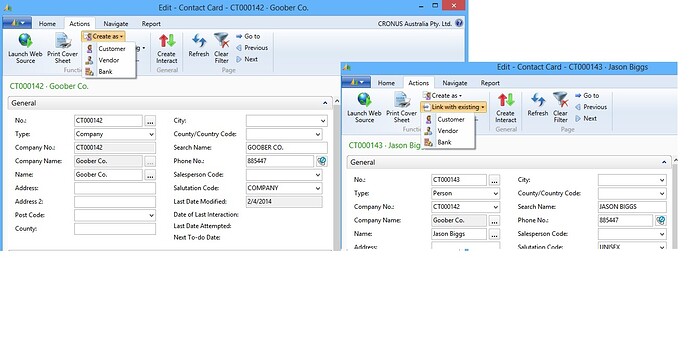We’ve just started our NAV 2013 implementation and one of the things I’m trying to nail down up front is how our current contacts and companies will be grafted into NAV so we can start a large data scrubbing project. I"m stumbling over the relationship between Contacts and Customersin NAV. I’ve been scouring the help files for information but cannot find anything helpful.
Our customers are People who work for Companies - some of these People/Companies have ordered from us and some have not, and this is not a terribly important distinction for us.
I understand that in NAV there are Contacts - and Contacts can either be people or companies. Then there are also Customers, and Customers can have contacts associated.
But as far as I can tell, the NAV Customer Contacts are not the same as the NAV Contacts (if I create a Contact, then create a Customer, on the Customer card the Primary Contact No. does not pull up my previously created Contact).
Obviously there is a hole in my understanding, but my high level questions are:
What is the difference or relationship between a Customer, and a Company/Person Contact?
Can I create a bunch of Company/Person Contacts, then somehow link/tie these to Customers?
If I’m trying to import thousands of People and the Companies they work for, and some of these have bought stuff from us and some have not, what does it make sense to map them to in NAV and how do we decide?
Our partner is still in requirement gathering stage and no doubt will advise on this, but that is a month or two away and I’m eager to start understanding how things will map.
Thanks!
-djm
